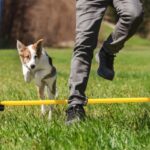Animal control plays a vital role in maintaining the balance between human and wildlife interaction. It’s not just about catching stray dogs; it’s about ensuring that animals and humans coexist safely. From urban areas to rural landscapes, the need for responsible animal control has grown exponentially as our environments overlap more than ever. Whether it’s dealing with a stray cat, a wild coyote, or managing a population of invasive species, animal control services provide a necessary intervention to keep our neighborhoods safe and thriving.
In this article, we’ll dive into the importance of animal control, explore the various services offered, discuss common wildlife issues, and even tackle some burning questions. Ready? Let’s get started!
What is Animal Control?
Animal control refers to services designed to manage and mitigate issues arising from human-animal interactions. This can include dealing with stray pets, wild animals, and livestock. Animal control officers are tasked with responding to reports, educating the public, and ensuring animals are treated humanely while safeguarding community safety.
From domestic animal management to wildlife rescue, animal control covers a wide spectrum of activities that cater to the safety of both humans and animals alike. Often, these services are provided by local municipalities, but they can also involve private companies or non-profits dedicated to animal welfare.
Why is Animal Control Essential?
Animal control is vital for several reasons:
- Public Safety: Animals, especially wild ones, can pose risks. Whether it’s a potentially dangerous dog or a wild animal encroaching on a neighborhood, these situations can escalate if left unchecked.
- Health Concerns: Stray animals can carry diseases like rabies, posing serious health risks. Through capturing and managing animals, control officers help prevent outbreaks of zoonotic diseases.
- Wildlife Conservation: Animal control also involves ensuring that endangered or at-risk species are protected. By controlling invasive species and managing human interactions with wildlife, they help preserve ecosystems.
- Humane Treatment of Animals: Animal control isn’t just about safety for humans. It’s about ensuring animals are treated ethically, whether they’re strays or wildlife in need of rescue or rehabilitation.
Common Animal Control Services
Here’s a list of services animal control typically offers:
- Stray Animal Pickup: Capturing stray or abandoned animals to prevent them from becoming a nuisance or hazard.
- Animal Rescue: Rescuing animals trapped in hazardous situations, such as a pet stuck in a drain or a wild animal inside a home.
- Wildlife Management: Safely relocating wild animals that wander into human areas or addressing problematic wildlife populations.
- Enforcement of Animal-Related Laws: Ensuring pets are licensed and that laws relating to animal welfare are upheld.
- Humane Trapping: For wild or feral animals, animal control uses humane traps to capture and relocate or rehabilitate animals.
Dealing with Strays and Lost Pets
Stray animals, particularly dogs and cats, often become a concern in urban areas. If you’ve ever encountered a stray dog wandering in your neighborhood, you know the anxiety it can cause. Fortunately, animal control is there to help.
When animal control receives a report of a stray animal, they take steps to capture the animal safely. Once in custody, these animals are typically scanned for a microchip, which helps identify their owner. If no owner is found, the animal may be put up for adoption or sent to a shelter.
Animal control officers also play a key role in promoting responsible pet ownership. They enforce local pet licensing laws and ensure that pets are vaccinated, which helps reduce the stray population and prevent the spread of disease.
Managing Wildlife
While dealing with pets is one aspect of animal control, managing wildlife is an entirely different challenge. Wild animals are essential to our ecosystems, but when they get too close to human habitation, they can become problematic. This is where animal control comes in.
Common wildlife issues include:
- Raccoons: These clever creatures often rummage through garbage and cause property damage.
- Coyotes: In rural and suburban areas, coyotes can pose a danger to small pets and livestock.
- Deer: While beautiful, deer can destroy gardens and become hazards on the road.
- Snakes: Non-venomous snakes are common in many areas, but venomous ones, like rattlesnakes, can be dangerous.
In such cases, animal control steps in to either relocate the animals or manage the population in a way that minimizes harm to both the animals and the community. It’s a delicate balance of preserving wildlife and ensuring human safety.
Animal Control and Legal Obligations
Did you know that animal control officers often have the authority to enforce local laws? They ensure that animal welfare laws are followed, whether it’s requiring proper care for pets, ensuring animals are spayed or neutered, or enforcing leash laws. Failure to comply with these laws can result in fines or the seizure of animals in extreme cases.
FAQs About Animal Control
- What should I do if I encounter a wild animal in my yard?
First, stay calm and do not approach the animal. Contact your local animal control service to assess the situation and handle the animal safely. Wild animals can be unpredictable, and professionals are trained to deal with them. - How do I report a stray animal?
If you spot a stray animal, call your local animal control service or check if your community has an online reporting system. Provide as much detail as possible, including the location and description of the animal. - Can animal control help with a lost pet?
Yes! Animal control services often have resources for finding lost pets. They can scan microchips and help reunite pets with their owners. Always make sure your pet is properly tagged and microchipped to increase the chances of finding them if they get lost. - What happens to animals picked up by animal control?
After being picked up, animals are typically taken to a shelter. If an owner is not found, the animal may be put up for adoption or placed in a foster home. In some cases, wild animals are rehabilitated and released back into the wild. - Is animal control available 24/7?
It depends on the municipality, but many animal control services offer emergency assistance outside of regular business hours. Check with your local animal control for specific operating hours.
Conclusion
Animal control is more than just a service; it’s a safeguard for our communities, pets, and wildlife. By maintaining public safety, enforcing laws, and promoting the humane treatment of animals, animal control officers ensure that our interactions with animals are both safe and respectful. Whether it’s a lost pet or a raccoon on your roof, animal control services are equipped to handle the situation professionally and ethically.





